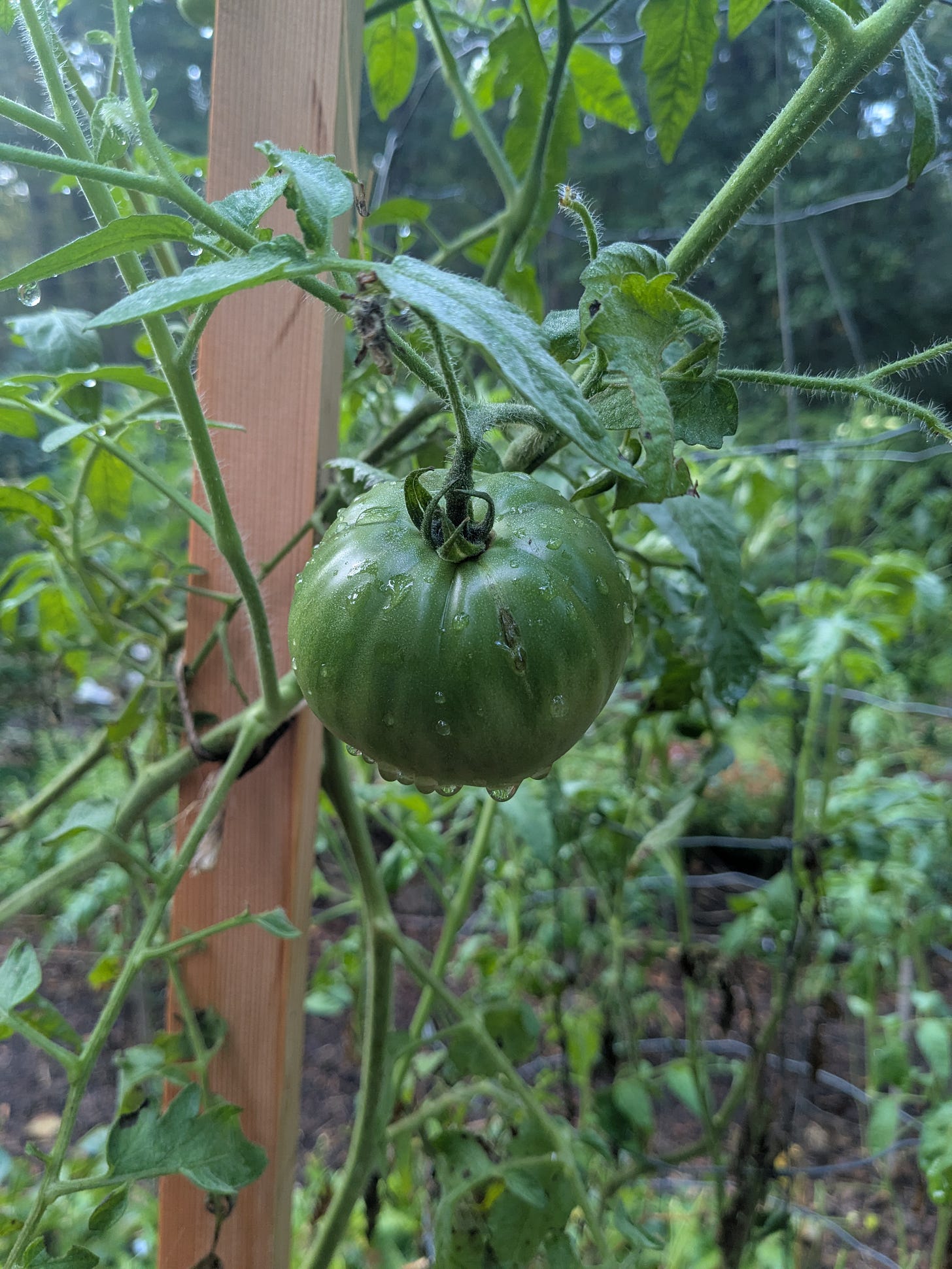On the Threshold
Celebrating the Autumnal Equinox
I wonder how in the long slow evolution of words this liminal moment became known as the equinox. It is accurate, this “equal night,” in a messy and ephemeral way. The earth’s tilt and its spin around the sun brings us into a curious balance of night and day, of light and dark, twice a year, if only for a moment. If I were asked, I would have voted for equilux instead. Though we will pass into fall today, into the season dominated by darkness, the poplars have long since anticipated it, have already begun enacting it, their green engines run down. These harbingers of the coming season lie about my feet. For those more than human, whose blood runs green, with a more intimate awareness of the length of day, the equinox is not an abstract holiday.
Though merely an astronomical moment, the autumnal equinox, marks a threshold in our seasons, marks the beginning of aptly named fall, and marks for us in the garden the transition from summer to fall planting. Though “threshold” no longer denotes the processing of the harvest (etymologically, to separate grain from chaff by treading on it), for the purposes of this essay, it is more than apropos, for the equinox is a day to celebrate the harvest.
Once a very human and homely event, threshing now occurs primarily in industrial agriculture in monstrous machines named combines for they combine the business of cutting and threshing. Our experience of harvest is, to say the least, remote. I have grown and scythed winter wheat and rye for a garden mulch, but I let our chickens manage the threshing. I can only marvel at the earliest agricultural empires when I consider the labor of the harvest. I have read that a good man with a good scythe could mow an acre a day. Today, a good combine can cut and thresh 18 acres an hour. It makes for a very different threshold. No wonder we no longer see the harvest in the word.
On this autumnal equinox, I will invest in the still point of the turning world by harvesting our faithful high summer crops (peas, okra, squash, corn, and melons) and by transplanting the fall seedlings, now ready to go in the ground. Our humble celebration tonight will be delightfully simple: we will enjoy our harvest meal (the very crops noted above), close to the land that grew it, on our screen porch that overlooks the garden, with homegrown, homemade bees wax candles and a glass of home-brewed mead (from the honey of our bees). Thus we embrace the moment, we honor this threshold and make the work of our days sacred; we will bow in gratitude to the earth and sun, to the air and the water embodied on the plates before us.
Today, I will surround myself with a sacred green, I will honor the passing of plant to food, will linger on the harvest threshold as I shell peas, and will see the glorious sun gathered and stored by the bees shine in a second life on our table. I will find anew the balance of new life and old as I invest in the culture of our agriculture.
May you too enjoy all the blessings of this threshold as you celebrate this equinox.
An Equinox Garden Update
As with so many years, the garden has had its share of glorious successes and a few dismal failures. We are grateful for five plantings of corn coming in throughout the summer, though the ears from some of the planting were small (still delicious) due to unfortunately timed periods of gray skies. We will enjoy the very last small ears tonight, a sweet bicolor that we simply love. We will also have a lovely yellow watermelon and cantaloupe salad as their vines turn to the end of life. In contrast, the resilient Tromboncino squash vines still run, and we will roast their nutty fruit tonight. Late high summer always brings an endless harvest of okra and zipper peas, great lovers of the Georgia heat. The sweet potato vines are rampant, though we will not dig them till All Saints.
The great failure of the year and greater because of our love of them was with our tomatoes, for we have had very, very few. I confess bad placement for one planting, but another planting failed because of the weather. The cool, constantly gray and wet days in May and then the constant rain in August (conditions tomatoes simply hate) stunted growth and clotted pollen. Still, I persist. As we passed into September, I prayed and pruned and trained the vines up eight foot stakes and now have a promising number of fruit set. Time is short, and we shall see if the harvest will be red, yellow, and purple, or simply green.
As a true marker of the day, I will be transplanting the fall garden. Started in the heat of August in the comfort of the cool basement and artificial light, the kale, lettuce, broccoli, and cauliflower are ready to go into the ground. If all goes well, we will have a good fall harvest, though some might sleep with Persephone and then produce in early spring. Planting on the autumnal equinox is a great grace of the Georgia garden, a bit of spring at the end of summer.





